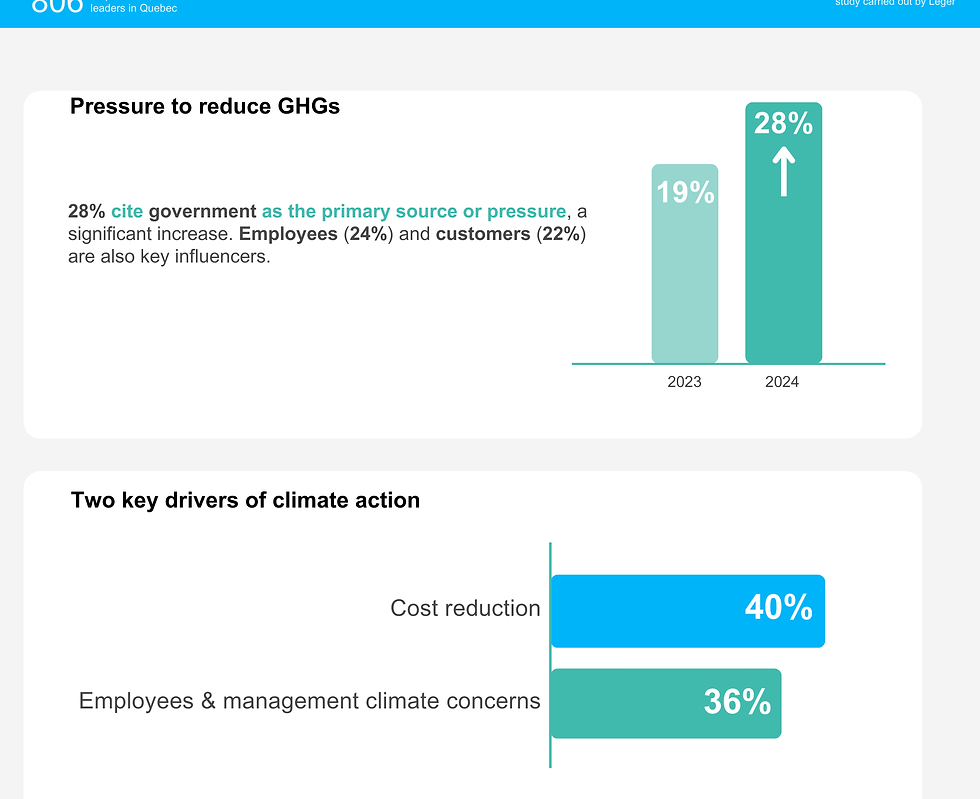BUSINESS TRANSITION BAROMETER
3rd edition
The most important survey providing strategic data on
businesses' climate action in Quebec
Business Transition Barometer 2024
The Business Transition Barometer by Québec Net Positif is the only study to focus specifically on climate action by businesses, including SMEs.
Thanks to the Barometer, it is possible to access representative and exhaustive data on the level of commitment of Quebec businesses to climate action. The Barometer debunks the myths surrounding the transition to a low-carbon economy, measures the current level of commitment of Quebec businesses to climate action, and tracks the evolution of their climate commitment over time.
Scroll down to find out more.
RECOMMENDATIONS 2024
LEARN MORE
To view the full Business Transition Barometer 2024 study,
download the full report













.png)
%20(2).png)
%20(3).png)
%20(4).png)